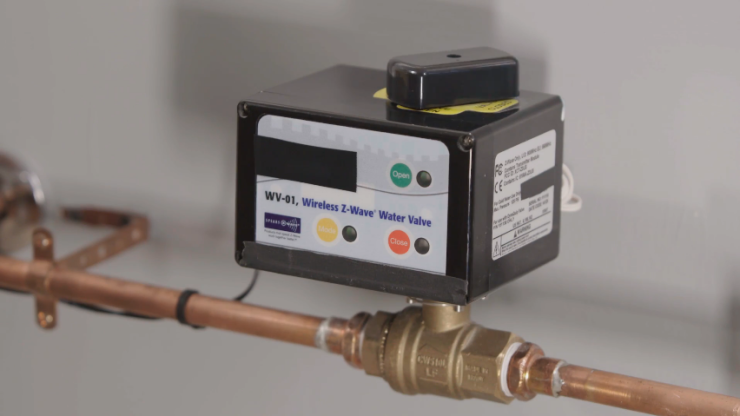Insurance provider American Modern knows that fire and water damage are the highest causes of loss for policyholders. But only the former really has consumers’ attention; in fact, water-related losses are sometimes called the silent killers, because damages don’t immediately come to light despite often requiring expensive, intrusive fixes.
With that pain point in mind, along with the knowledge that most consumers are aware of the need for safety devices like security monitors, motion sensors, and cameras, the company began to search for technology that would provide a solution for customers.
“We wanted to start small, to get some key learnings that would eventually translate into a plan for integration of IoT devices in our business,” says Shannon Lewandowski, head of IoT for a new seven-person innovation and digital team at American Modern.
The company then leveraged its claims training facility and its LivingWise smart home, built within the facility in 2015 with its sister company Hartford Steam Boiler. “Since the inception of the LivingWise project, I became interested in how IoT devices could be used to prevent or reduce damages from certain losses,” she says. “We actively test these types of devices in the LivingWise house to better understand how they work.”
Based on a flooding event that was done at LivingWise, the team began to look at its own losses to see if a water sensor pilot would make sense. The team installed several different kinds of water sensors in the LivingWise home, ranging from simple, self-installed sensors to shut-off valves that require professional installation. “We wanted to explore a variety of options and help educate our customers on what is available,” she explains. “There are a lot of things to consider when selecting a water sensor and it’s important for people to know what will best fit their needs.”

Now, the new pilot program provides homeowner policyholders in Alabama, Colorado and Ohio with a free water sensor. The sensors are designed to detect water leaks and then provide alerts through a mobile app, enabling the policyholder to remotely monitor their primary or vacation home. In addition, many of the sensors will integrate with in-home smart speakers, which are increasing in popularity.
Participants will self-report at the end of the pilot, which Lewandowski says will help the team learn what worked as well as provide information about other sensors policyholders are interested in. “Ultimately, the data will help prove whether or not these sensors help prevent or reduce water damage for our policyholders,” she says.
American Modern’s innovation and digital team was fully staffed in September 2017, with team members from various backgrounds and areas of expertise, including claims, software engineering, data, product, IT, and design thinking. The team was deliberately taken out of the carrier’s core operations so that it would be free to pursue innovation without the constraints of the traditional business model.
“We were given the charge to disrupt ourselves before someone else does — this means that we think about what would put American Modern out of business, and then we pursue just that,” Lewandowski explains. “Overall, our team wants to reimagine insurance and we want to make it easy, simple to use and add value.”
The innovative spirit is essential to the team’s success, she continues, citing the company’s Project Blackbox as a program that empower employees to take their ideas to the next level. The participants are given training in Lean methodology and then assigned a mentor. They vet their ideas by defining the problem statement and then present to a panel — if accepted, they build out a business model and then pitch to the executive board to see if their idea will be funded to move forward.
“We want employees to feel comfortable in coming to us with their ideas,” she says. “It really lends to the innovative culture we want to encourage.”
The water sensor pilot is just the start, says Lewandowski, but as the company tests what works they aren’t afraid to change it, stop it or try something new altogether. “This is something new for our company and for the industry,” she says. “I think we have a lot of room to explore and develop new ideas — I really think the sky is the limit.”





